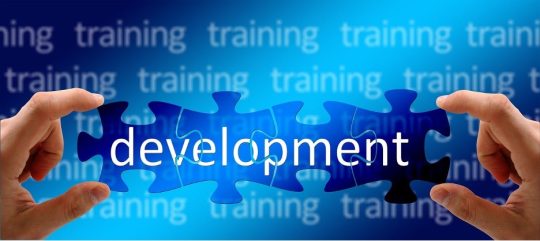Widgetized Section
Go to Admin » Appearance » Widgets » and move Gabfire Widget: Social into that MastheadOverlay zone
The Transition from Learning to Performance in Government Training Departments: Should Learning and Development Evolve into the Performance Department?
The views expressed are those of the author and do not necessarily reflect the views of ASPA as an organization.
By Bill Brantley
November 15, 2024

Why Rebrand to “Performance”?
In recent years, organizations, including government training departments, have rethought their approach to Learning and Development (L&D). Although L&D has long emphasized continuous learning and employee growth, experts now believe that “Learning and Development” may not fully capture the goals for the 21st century. They suggest renaming it the “Performance Department”.
The term “Learning and Development” often implies training courses and workshops, which can limit government training departments to just providing these. However, many agencies need more than courses; they require a workforce that can swiftly convert knowledge into tangible, impactful outcomes.
“Development” is often vague, lacking clear outcomes. “Performance” emphasizes outputs and aligns with organizational goals. Rebranding L&D as the Performance Department highlights that training should enhance productivity, improve services and advance the agency’s mission.
Moving Beyond Courses to Focus on Outcomes
The traditional L&D model separates training from employees’ actual work. Government training departments can adopt a performance-centric approach, focusing on initiatives tied to job performance and organizational outcomes. Instead of only formal courses, they could provide informal learning, performance support tools and just-in-time training to help employees enhance their skills while performing their roles.
This approach promotes a more advanced, goal-oriented perspective on training. Employees would view learning as a continual aspect of their work rather than an occasional, separate activity. In this manner, “learning” is incorporated into the job, making employees active contributors to the organization’s success instead of passive recipients of training.
The Role of AI in Enabling Performance-Driven Training
Today’s technologies support a performance-oriented model. AI, for instance, helps employees learn faster and more efficiently by providing quick access to information, insights and enabling greater autonomy and accuracy in tasks.
AI allows employees to learn and work simultaneously. They no longer need long training sessions but can use AI tools to find answers, complete tasks and develop skills on the job. This access boosts independence and productivity, blurring the lines between learning and doing, and prioritizing performance as the key outcome of training.
Government training departments can use AI and digital tools to let employees manage their own development, enhancing performance independently of traditional sessions. Training departments should curate resources and use data analytics to improve performance support.
Emphasizing Data-Driven Results Over “Happy Sheets”
Performance-driven training now focuses on measurable outcomes. Traditional L&D programs used participant surveys to measure satisfaction, but these don’t show real-world impact or improved performance.
Government training departments should use actual data to evaluate training effectiveness. AI can help by collecting and analyzing data on employee performance, skill improvement and task efficiency. Instead of tracking attendance, they could measure how well employees apply new knowledge in their work, using metrics that align with agency objectives.
AI enables training departments to shift from being “order-takers” to strategic partners, driving measurable outcomes. This data-driven method fosters ongoing improvement, letting departments refine their programs based on real-world feedback.
Creating a Culture of Continuous Performance Improvement
Focusing on performance transforms training departments and motivates employees. When they connect their training to agency goals, they feel valued, take ownership, seek improvement and become more autonomous and engaged.
Performance-driven training aligns with workforce trends. Employees, especially in government, need more than technical knowledge; they need strategic capabilities, adaptability and critical thinking. By focusing on performance, government training can help develop these skills, preparing employees for current and future challenges.
Aligning with Organizational Goals
The shift from learning to performance represents an alignment between government training departments and the objectives of the organization. Government agencies encounter complex problems and increasing demands for efficiency and accountability. A performance-focused training department can address these needs, assisting the agency in meeting its goals and providing improved services to the public.
Adopting a performance mindset helps clarify the role of training departments. Instead of debating L&D’s future, leaders should ask, “What problems are we solving?” This ensures training meets concrete needs and aligns with measurable outcomes. Embedding performance in training enables government agencies to demonstrate their impact, similar to Marketing, Legal and Finance Departments.
Renaming Learning and Development to the “Performance Department” signifies a shift in focus. This change helps training departments become strategic partners, promotes data-driven decisions, embraces advanced technologies like AI and enhances the impact of government employees on their communities.
Government training departments must evolve with the changing workplace. By focusing on performance, training can build knowledge and drive impactful results. This approach reshapes government training to deliver value through performance, not just learning.
Author: Dr. Bill Brantley is the President and Chief Learning Officer for BAS2A, an instructional design consultancy for state and local governments. He also teaches at the University of Louisville and the University of Maryland. His opinions are his own and do not reflect those of his employers. You can reach him at https://www.linkedin.com/in/billbrantley/.


Follow Us!